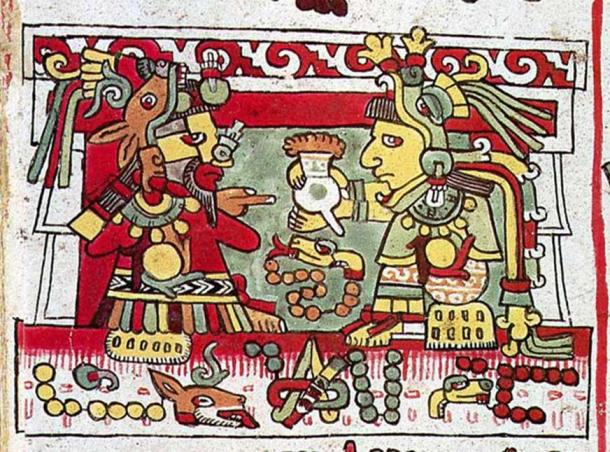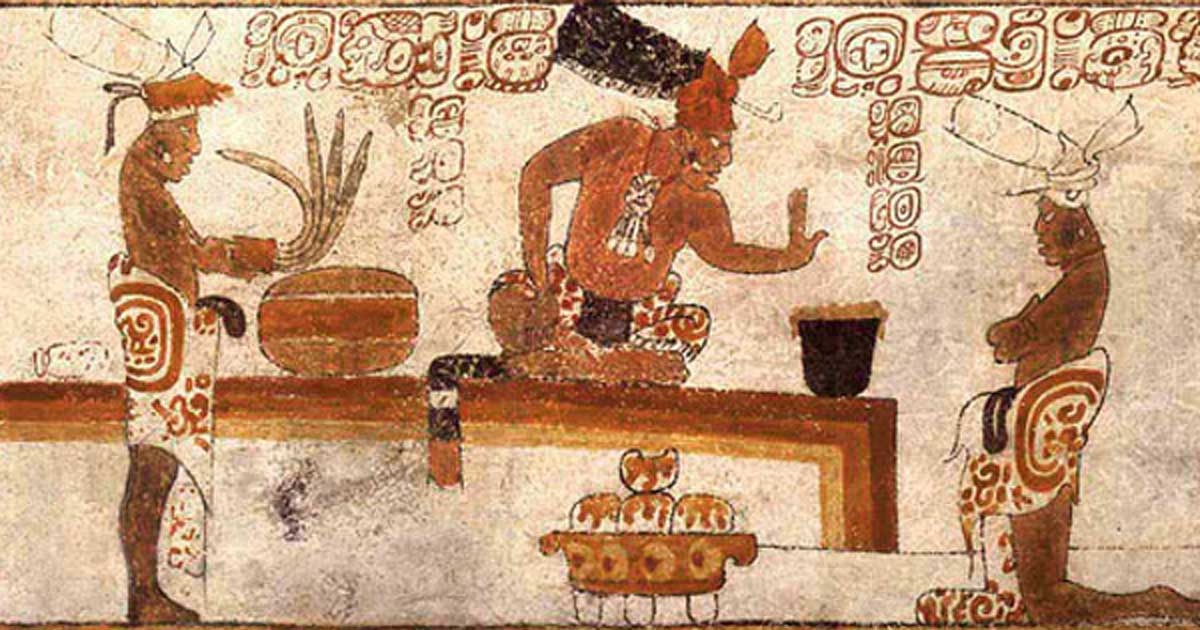Failed Crops Caused Economic Crash for Mayan Chocolate Currency
An academic study has made a remarkable claim about the role of chocolate in ancient Mayan society. An archaeologist is arguing that chocolate was used as money by the ancient Maya. That is right, your favorite treat was used as cash in the past. The same study is claiming that the decline in the production of cacao, the source of chocolate, was a major reason for the downfall of the Maya.
History of Chocolate
Chocolate is made from the beans in the pods of the cacao plant. The pods are large and round and not nice to eat. However, sometime about 1500 BC the societies of Mesoamerica learned how to turn cocoa beans into a form of chocolate. According to the Smithsonian, ‘the Olmecs of southern Mexico were probably the first to ferment, roast, and grind cacao beans for drinks and gruels, possibly as early as 1500 B.C’. The knowledge to make chocolate was passed to the Mayan and other cultures and when the Spanish arrived they discovered many cocoa orchards in the Maya lowlands.

Theobroma cacao, chocolate in its rawest form. (Public Domain)
The Mayans would harvest the beans and turn it into a liquid which was quite bitter and was often flavored with herbs and chillies. Chocolate played a very important social role, it was expensive, and it was associated with those who had a high social status. It was drunk, at special events such as marriages and was also used in religious ceremonies. There is also evidence that cacao plants were used in burial ceremonies and chocolate is frequently depicted in Mayan murals and artwork.
- The Ancient History of Chocolate, Gift of the Gods
- What the ancient Mayans can teach us about health and healing

Kakaw (cacao) written in the Maya script: The word was also written in several other ways in old Maya texts. (Public Domain)
Chocolate Cash
Joanne Baron, an archaeologist with the Bard Early College Network conducted a study of, Classic Mayan artwork, from 250 to 900 AD. Baron studied a variety of objects with artwork, including murals, ceramics and carvings. During her study, she discovered that chocolate was not really depicted until the 8 th century AD and after this time, it became much more prevalent.
- Possible sacred maize object found in stream at Olmec site
- Immortality, the Elixir of Life and the Food of the Gods

An Aztec woman preparing the cacao drink. The liquid was poured from a height to create a froth or foam on top. Public Domain
The expert identified a mural from the Mayan lowlands where a woman was offering some chocolate in exchange for dough. Barron believes that chocolate was initially bartered for other goods. However, later roasted cacao beans became a form of currency and there are some 180 images of them being given to monarchs and leaders as a form of tribute. The fact that they were used to pay taxes would indicate that cacao beans had evolved to become a currency.

8-Deer (‘Jaguar Claw’) receives a jug of cacao from the hands of his wife 13-Snake (‘Flower Snake’), Codex Zouche-Nuttall pl. 26. (Image: mexicolore)
The inherent value of the cacao beans, as the key ingredient in making chocolate, made them valuable and their social role meant that they evolved into a currency. Barron, in the journal Anthro Source, states that cacao beans, ‘originally valued for their use in status display, took on monetary functions within a context of expanding marketplaces among rival Maya kingdoms’. She also claims that textiles became a form of currency because of similar processes and social forces.

The Maya creator diety Itzamna, cacao-collecting. From the Dresden Codex: 6c-7c Frame: 2. Image courtesy of Vail, Gabrielle, and Christine Hernández (2013) The Maya Codices Database, Version 4.1 (Image: mexicolore)
Chocolate Crash
The most controversial part of the theory of Barron is that the loss of cacao played a crucial role in the decline of the Classic Mayan civilization. Because of its role as a currency, the decline in the availability of the beans that made chocolate led to a reduction in economic transactions and activity. However, David Freidel, an anthropologist at Washington University in St. Louis, Missouri, does not agree with this. In Science, he states that, ‘’ my guess is that one commodity crashing would not cause the system to crash.”
Chocolate played a very important role in Mayan life and culture. Based on its depiction in murals and other objects it seems that it was initially used in barter and it later became monetized. This shows that the value of a currency lies not only in its inherent value but also because of its role in social interactions. The finding also indicates how sophisticated the Mayan were and how they were able to create a complex economy centuries before the arrival of the Spanish.
Top image: A Mayan lord sits before an individual with a container of frothed chocolate. Source: Public Domain
By Ed Whelan



















